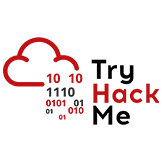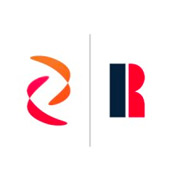- Project starts17 July 2024
- PrerequisitesIT & Networking Fundamentals
- Places remaining4
- Project Duration9 weeks
- Course Price This project is part of the Career Launcher Cyber Security Course
The Project
Dive into the heart of cybersecurity with our Evidence-Based Risk Assessment Project. In this real project experience, you’ll learn to interview and audit an organizations cyber risk profile. Dive deep into a real companies processes and governance and and learn to assess, analyze, and mitigate potential threats. Using industry-leading tools and techniques, you’ll provide data-driven recommendations to enhance an organization’s security posture.
The company participating in this project will be announced soon. Stay tuned!

Meet Your Mentor
Meet Your Mentor
Efrain Orsini Jr is a seasoned cybersecurity professional with over 12 years in the industry. He’s built multiple cybersecurity programs from scratch, developing bug bounty and vulnerability assessments, and implementing phishing programs. Efrain has spent time understanding & implementing AI/machine learning while reducing cyber risks with scalable solutions/techniques. He’s also
Efrain Orsini Jr is a seasoned cybersecurity professional with over 12 years in the industry. He’s built multiple cybersecurity programs from scratch, developing bug bounty and vulnerability assessments, and implementing phishing programs. Efrain has spent time understanding & implementing AI/machine learning while reducing cyber risks with scalable solutions/techniques. He’s also dedicated and passionate about helping others grow and succeed, as evident by him creating an 8-week program for cybersecurity interns while at Conquest Cyber. He currently holds multiple certifications including CISM, CDPSE, CRISC, CCSK and is attending Carnegie Mellon University for their CISO program. When he’s not focused on work, he loves spending time with his wife, their two children, and two dogs.
Where I’ve worked
- Head of Security Operations @ QAD Redzone
- Senior Trainer and Planner @ United States Army Reserve
- Security Operations Manager @ Conquest Cyber
Firewalls
Firewalls are security systems that monitor and control incoming and outgoing network traffic based on predetermined security rules, acting as a barrier between a trusted network and an untrusted network.
How it will be practiced and demonstrated
This knowledge area is a pre-requisite for our Cyber Security course. Your knowledge of Firewalls will support the project work you complete throughout the course.
Access Control
Access control in cybersecurity refers to the process of granting or denying specific requests to obtain and use information and related information processing services, ensuring that only authorized users have access to resources in a network or system.
How it will be practiced and demonstrated
This knowledge area is a pre-requisite for our Cyber Security course. Your knowledge of Access Controls will support the project work you complete throughout the course.
VPN
A VPN (Virtual Private Network) in cybersecurity is a service that creates a secure, encrypted connection over a less secure network, such as the internet, to provide privacy and anonymity for data communication.
How it will be practiced and demonstrated
This knowledge area is a pre-requisite for our Cyber Security course. Your knowledge of VPN will support the project work you complete throughout the course.
Data Protection
Data protection in cybersecurity involves implementing measures and protocols to safeguard sensitive information from unauthorized access, corruption, or theft throughout its lifecycle.
How it will be practiced and demonstrated
Students will demonstrate an understanding of foundational concepts of data protection, including data confidentiality, integrity, and availability. Mastering this skill area includes optimizing data protection strategies to address specific organisational needs and emerging threats.
Hardware Security
Hardware security in cybersecurity refers to the protection of physical devices from threats like tampering, theft, or damage, ensuring the integrity and functionality of the hardware components.
How it will be practiced and demonstrated
Students will demonstrate an understanding of the importance of securing hardware components and devices. Mastering this skill area includes guiding organizations to enhance their hardware security posture against evolving threats.
Endpoint Protection
Endpoint protection in cybersecurity is the practice of securing endpoints or entry points of end-user devices like desktops, laptops, and mobile devices from being exploited by malicious actors and campaigns.
How it will be practiced and demonstrated
Students will demonstrate an understanding of the basic concepts of endpoint protection, including the importance of securing individual devices to protect the network. Mastering this skill area includes guiding organizations to enhance their endpoint protection capabilities to defend against sophisticated threats.
Patch Management
Patch management in cybersecurity is the process of managing updates for software and systems, fixing vulnerabilities, enhancing functionality, and maintaining current security standards.
How it will be practiced and demonstrated
Students will demonstrate an understanding of the importance of patch management. Mastering this skill area includes a capability to develop strategies to ensure comprehensive and timely patch application across an organization.
Secure Coding Practices
Secure coding practices in cybersecurity involve the use of techniques and strategies to write software code that is robust against vulnerabilities and attacks, ensuring the security and integrity of applications.
How it will be practiced and demonstrated
Students will demonstrate an understanding of the importance of secure coding practices and common vulnerabilities. Mastering this skill area includes a capability to assess the effectiveness of secure coding practices and recommend improvements.
Incident Response Preparation
Incident response preparation in cybersecurity involves establishing protocols and teams to efficiently manage and mitigate the impact of security incidents, breaches, or cyber attacks.
How it will be practiced and demonstrated
Students will demonstrate an understanding of the basic concepts of Incident Response Preparation. Mastering this skill area includes a capability to optimise incident response preparation processes and integrate them seamlessly with other security protocols.
Incident Response Detection & Identification
Incident response detection and identification in cybersecurity is the process of monitoring for, recognizing, and determining the nature of cybersecurity incidents or threats as they occur.
How it will be practiced and demonstrated
Students will demonstrate an understanding of basic incident detection and identification methods.. Mastering this skill area includes demonstrating proficiency in utilising advanced tools and techniques for incident detection and identification.
Incident Response Response Containment
Incident response containment in cybersecurity refers to the actions taken to limit the extent and impact of a cybersecurity incident or breach to prevent further damage or data loss.
How it will be practiced and demonstrated
Students will demonstrate an understanding of the basic principles of containing security incidents. Mastering this skill area includes demonstrating a capability to develop and optimise containment strategies to address a wide range of incidents.
Incident Response Response Eradication
Incident response eradication in cybersecurity involves identifying and eliminating the root cause of a security incident or threat, to prevent its recurrence and restore system integrity.
How it will be practiced and demonstrated
Students will demonstrate an understanding of the different eradication methods and their applications. Mastering this skill area includes assessing the effectiveness of eradication strategies and recommending enhancements.
Incident Response Response Recovery
Incident response recovery in cybersecurity is the process of restoring and returning affected systems and operations to normal functioning after a security incident, while ensuring ongoing protection and resilience.
How it will be practiced and demonstrated
Students will demonstrate an understanding of the basic concepts of recovery after security incidents. Mastering this skill area includes leading organisations in enhancing their resilience and recovery capabilities after security incidents.
Cyber Security Risk Management
Risk management in cybersecurity involves identifying, analyzing, and implementing strategies to manage and mitigate risks to an organization's information and information systems.
How it will be practiced and demonstrated
Students will demonstrate an understanding of the basic knowledge of risk management principles in cybersecurity. Mastering this skill includes demonstrating expert ability in cybersecurity risk management, advising on complex risk scenarios and mitigation strategies.
Cyber Security Regulatory Compliance
Regulatory compliance in cybersecurity refers to adhering to laws, regulations, guidelines, and specifications relevant to an organization's cyber security operations and data protection.
How it will be practiced and demonstrated
Students will demonstrate an understanding the importance of regulatory compliance in cybersecurity. Mastering this skill includes demonstrating expertise in navigating and advising on complex regulatory compliance issues in cybersecurity.
During your projects, you will have a chance to practice and demonstrate competency in communication by successfully transmitting your ideas, thinking processes and solutions in a way that is easily understood by others.
Your mentor will observe and assess your competency across a number of communication related skills including;
Listening
Listening is the ability to accurately receive and interpret messages in the communication process. Listening is key to all effective communication and is not a passive process. In fact, the listener can, and should, be at least as engaged in the process as the speaker. The phrase ‘active listening’ is used to describe this process of being fully involved.
Presence
Your presence signals your capacity to stand out and make an impact on those around you. As you move into senior roles, this attribute becomes particularly important, however it is also an attribute that can support your ability to make a positive impression on hiring managers during a job interview process.
Articulation
An ability to express yourself in a coherent form helps to ensure people will understand your value. Great articulators are able to clearly communicate complex scenarios to their audience to ensure they are understood. This can go a long way to supporting your interview process and building confidence in those you are communicating with.
Inclusivity
In a modern work environment you are required to work with individuals from a variety of backgrounds, cultures and social positions. The most highly effective teams are those that are able to adapt and learn to work with a range of people and personalities.
A tried and true skill for any professional is the ability to present their ideas to an audience and effectively transmit the intended message. You will have the opportunity to strengthen your presentation skills in front of a live company stakeholder at the conclusion of your project(s).
Your mentor will observe and assess your competency across a number of presenting related skills including;
Introductions
Your presentations should take your audience on an engaging journey. How you start a presentation is critical to capturing your audience’s attention and establishing the premise and flow of the story line.
Presentation Structure
The structure of your presentations will determine whether your audience comes away with new insights and understanding or if they dis-engage from your message. Take the time to consider the structure of your ideas, the order they follow and how they how to support the audience on their journey to your conclusion.
Conclusions
Bring home your presentations with a conclusion that links back to your main points and introduction. The goal of a good conclusion to a presentation is leaving your audience with a tangible take-away that adds value to them. Knowing your audience and what is important to them is a key starting point to forming a strong conclusion.
Audience Feedback
At times you will be required to field questions and be ready to move off-script to maintain the value exchange between yourself and the audience. Great presenters encourage audience interaction and curate this dynamic to emphasise key points in the presentation without letting it derail their core message.
Presence
Your audience will feel as comfortable as you are. Therefore it is important to ensure you are as comfortable as possible with the material you are presenting and strive to maintain confidence in your own abilities to deliver the presentation. Practice makes perfect here so don’t get disheartened if it takes some time before you’re completely at ease delivering your message in a presentation format.
The best solutions are most often formed through the input of multiple people. In modern work environments, small team collaboration is an increasingly sought after skill by employers, as agile ways of working are adopted that bring together multiple disciplines around a unified challenge.
Your mentor will observe and assess your competency across a number of collaboration related skills including;
Interaction
Effective collaboration with others is one of the primary skills hiring managers look for in new talent, particularly for digital roles where you are required to work closely with individuals from all different departments and skill sets. Collaboration is the make up of all your interactions with your teammates and stakeholders.
Teamwork & Leadership
There will be times during your Harness Projects where you will need to work as a team to synthesise research or support each other with feedback and advice. You may be called on to lead as the group recognises a specific skill set in you in relation to a task at hand. Your communication skills will be your foundation for success here, so take the opportunity to step into leadership roles and inspire confidence in yourself and others.
Conflict Resolution
Conflict, arguments and change are a natural part of our lives and often helps us learn more about differing beliefs, cultures and backgrounds. How we respond to these moments goes a long way to determining how quickly a group, organisation or culture can find a foundation of harmony to continue working / relating effectively, to the task at hand.
Initiative & Contribution
Showing initiative is doing things without being told; finding out what you need to know, continuing when things get tough, and spotting and taking advantage of the opportunities that others pass by. You act, instead of reacting, at work. Initiative has become increasingly important in today’s workplace. Organizations want employees who can think on their feet and take action without waiting for someone to tell them what to do. After all, this type of flexibility and courage is what pushes teams and organizations to innovate and to overcome competition.
You will demonstrate empathy by listening to your end-users and stakeholders and appropriately translating their needs, motivations and pain points into your final recommendation solution. A number of important factors contribute your over empathy as a working professional. This includes compassion for your colleagues and customers, an openness to alternative ideas and ways of working, a curiosity to understand others on a deeper level and the social awareness to foresee the impacts of the work you contribute.
Your mentor will observe and assess your competency across a number of empathy related skills including;
Compassion
When you sit in a room with your colleagues or your clients do you ever look for where there’s a pain in the room? And if you do notice, do you feel content enough to do something about it? Studies are finding these simple acts found in compassionate workplaces are helping to produce more productive, efficient and happier employees in organizations. Differing slightly from empathy which allows us to mirror someone else’s feelings, or altruism which is an action that benefits someone else, compassion is an
emotional response when perceiving suffering and involves an authentic desire to help. At Harness Projects, we strive to build a team culture of compassion. We’re all on this learning journey together and the more we can demonstrate moments of compassion for one another and all of our unique experiences during the project the stronger the bond we will form and the better the outcomes will be for everyone involved.
Openness
Openness is one of the big 5 personality traits. People who demonstrate high levels of openness tend to be linked to high levels of creative thinking, curiosity and flexibility. Openness includes a receptivity to new ideas as well as an attention to the inner feelings of others. These are traits that will support you well in the problem solving work you do.
Curiosity
Curiosity is a quality related to inquisitive thinking such as exploration, investigation, and learning. Curiosity as a behavior and emotion is considered the driving force behind not only human development, but developments in science, language, and industry. Every problem you encounter will ask for a level of curiosity from you. The more you can surrender to that curiosity and reserve assumptions or early judgement, the more space you will have to seek out novel and effective solutions to the design challenge at hand. Not only that, but a curiosity in how you develop during this learning program is a self-awareness trait that hiring managers will value highly.
Social Awareness
Having an awareness of the impact of your work is critically important to how you can contribute to the world we want to live in. You are in an extremely fortunate position to be part of an education program along with learning a skill that can help shape the experiences of millions of less fortunate people. The projects we curate at Harness Projects are all about applying all of your efforts to meaningful causes. It hopefully shows us what is possible and demonstrate that all of our efforts when combined contribute to the type of world we want to live in.
Real-world projects can bring unexpected challenges and opportunities. Just like a real-world work environment, your capability for resourcefulness can go a long way to securing a successful career. Your mentor will guide you and assess you on your ability to demonstrate self-direction when required, problem solving and project management capabilities and your openness to learning from circumstances that arise. We focus on this to ensure that our graduates are equipped with the internal resourcefulness to excel in the workplace.
Your mentor will observe and assess your competency across a number of resourcefulness related skills including;
Self-direction
Self-direction is the ability to regulate and adapt your behavior to the demands of a situation in order to achieve one’s goals. Sometimes related to willpower, it describes the extent to which a person demonstrates integrated purposefulness rather than a disorganised set of reactive impulses. Throughout your project, there will be moments to receive guidance from others and moments to make the experience your own through self-directed learning. Ask questions and take actions that help to align your trajectory to the outcomes you have set for yourself during the project.
Problem Solving
Problems solving is at the centre of what many people do at work every day. Whether you’re solving a problem for a client (internal or external), supporting those who are solving problems, or discovering new problems to solve, the challenges you face can be large or small, simple or complex, and easy or difficult. Your project is a problem solving sandbox, with your project brief forming the overarching problem you are attempting to solve.
However, within that overarching problem are countless mini-problems that you will encounter on your journey.
Project Management
Project management skills are not simply reserved for those with the “Project Manager” title. In work, we all have a responsibility to apply effective project management skills to the work that we do. This includes managing our time, planning out the activities we intend to take to reach our goals and making the best use of the resources and support at hand. The earlier you can get into a project management mindset for your project the better it will go. Plan your time early and plan often. By staying on top of this during your projects, you will ensure a smooth run to the finish line instead of a heavy workload at the very end. This skill will serve you well in ensuring you maintain a work life balance in your career.
Learnability
Learnability is being seen by some companies as the most sought-after attribute for both employees and job candidates, even up to senior executive levels. Learnability describes someone’s aptitude for learning, developing new skills and adopting novel ways of doing things. Those individuals who are highly proficient learners are seen as adaptable and
therefore able to keep pace with the dizzying level of technological and commercial change companies are currently coping with. Disruptive innovation doesn’t disrupt them – they figure it out, adapt and are rapidly productive in the new environment.



We’ve partnered with Cyber Security industry leaders to ensure you receive the best quality learning content and tools to apply your Cyber skills.
Sounds great, now what?
Register your interest here and a Harness Projects consultant will be in touch to discuss the project in more detail with you.


